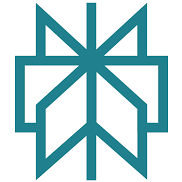Gooten is one of the biggest names in print-on-demand fulfilment — but does it live up to the hype in 2025?
I’ve spent over a decade building and scaling POD stores, testing dozens of platforms to figure out what actually works in real ecommerce businesses. In this in-depth review, I break down how Gooten performs when it comes to product quality, fulfilment, pricing, integrations, customer service, and more — based entirely on real-world use, not marketing fluff.
Quick Verdict
Gooten – Best for scaling sellers, agency owners, and businesses that want full automation and strong profit margins without paying for extra features.
Not ideal for beginners, design-focused brands, or anyone who wants custom packaging or a polished UI.
In this review, I’ll explain exactly how Gooten stacks up in terms of:
- Product catalog and niche flexibility
- Order fulfilment and shipping times
- Profit margins and cost transparency
- Ease of use and seller tools
- Real customer reviews and support experience
By the end, you’ll know whether Gooten is the right fit for your store — or if you should go with an alternative like Printful, Printify, or Gelato instead.
Let’s get into it.
What Is Gooten & Who’s It Best For?
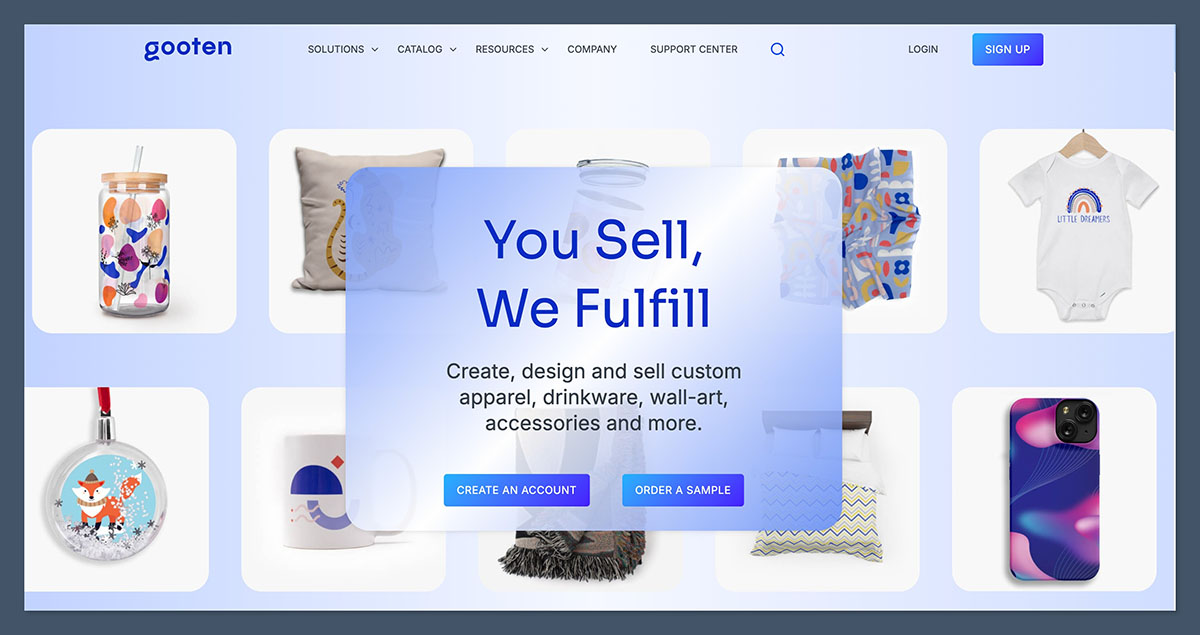
Gooten is a backend print-on-demand and order fulfilment platform.
It connects your eCommerce store to a wide range of white-label products and automatically fulfils orders on your behalf.
Unlike Printful or Printify, Gooten feels more like a supply chain partner than just a marketplace.
Who should use Gooten?
- Agencies managing multiple stores
- Brands that want scalability without worrying about fulfilment
- Sellers focused on automation and profit margins
Who should avoid Gooten?
- Beginners who want sleek mockups and UI
- Creatives looking for full control over packaging and branding
- Shopify store owners who want an all-in-one creative POD solution
If you’re about function over form and want to treat POD like a business, not a hobby, Gooten fits.
How Gooten Works: Business Model Breakdown
Gooten doesn’t print your stuff — they manage a network of manufacturers and route orders automatically to the right partner based on product, location, and availability.
Think of them as your logistics manager.
- You sell the product
- Gooten routes the order to a manufacturer
- They print, pack, and ship to your customer
Key differences:
- No monthly fee
- No manual order management
- Dynamic routing = faster fulfilment and fewer errors
It’s a lean model built for volume sellers. Not flashy, but efficient.
Pros and Cons of Gooten
Pros:
- Solid profit margins compared to Printful
- Large product catalog
- Hands-off fulfilment
- Supports scaling and multi-store setups
- No upfront costs
Cons:
- Clunky interface
- Limited branding options
- Not beginner-friendly
- Mockups are basic
- Support can be slow
Gooten’s Product Catalog: What Can You Actually Sell?
Gooten offers a catalog of 150+ print-on-demand products, which puts it in the mid-to-upper range when compared to platforms like Printify and Gelato. You won’t find the craziest range of SKUs here, but what they do offer is enough to build a niche store, scale a brand, and sell across seasons.
Their product library covers everything from staple apparel to high-margin wall art and underused home goods. It’s functional, not flashy — but that’s exactly why it works.
Here are the core product categories that you can build out entire store collections around:
Apparel
- T-shirts (crew necks, v-necks, long sleeves)
- Hoodies (pullovers, zip-ups)
- Tank tops and crop tops
- Baby onesies and toddler shirts
Gooten sources apparel from trusted brands like Bella+Canvas, Next Level, and Gildan, so quality is predictable and familiar. If you’ve sold POD apparel before, you’ll know what to expect.
Wall Art
- Framed posters
- Wrapped canvas prints
- Wood panels and fine art prints
Wall art is one of Gooten’s strongest categories for profit. These products work especially well in niche gift stores, motivational quote shops, and aesthetic decor brands targeting Etsy and Pinterest traffic.
Drinkware
- Classic ceramic mugs (11oz and 15oz)
- Stainless steel tumblers
- Insulated travel mugs
- Water bottles
Mugs and tumblers are timeless — they work for just about every audience. With low base costs and a small shipping footprint, they’re a great item for bundling or low-ticket testing.
Home Decor
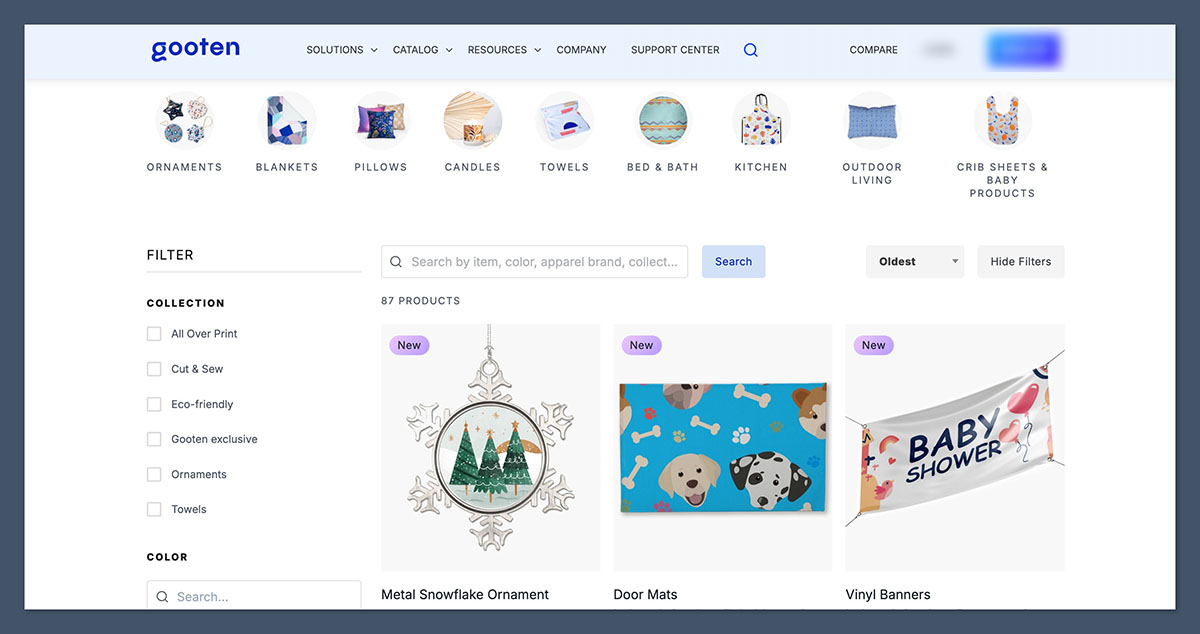
- Throw pillows (with or without insert)
- Sherpa, fleece, and velveteen blankets
- Towels (beach and bath)
These are great for seasonal campaigns, especially in Q4. I’ve seen sherpa blankets and custom pillows absolutely fly off the shelves during Black Friday/Cyber Monday when paired with family or pet-focused designs.
Accessories
- Tote bags (cotton and poly)
- Notebooks and journals
- Phone cases
- Drawstring bags and laptop sleeves
Accessory margins are a little tighter, but they’re ideal for branded merchandise or store upsells. If you’re building a fan-based or merch-driven brand, these work well.
Unique Offerings for Niche Stores
Gooten also includes products that most POD platforms skip — and these make a difference when you want to stand out or test less competitive ideas:
- Pet beds and accessories
- Yoga mats
- Aprons
- Christmas ornaments
- Calendars
- Travel bags
These are especially powerful if you’re tapping into specific hobby, pet, or seasonal markets.
You won’t base your entire brand on yoga mats or ornaments, but you’ll absolutely profit from them as part of a niche collection.Final Thoughts on the Catalog
Here’s a quick snapshot:
| Category | Product Range | Bestsellers | Profit Margin |
|---|---|---|---|
| Apparel | High | T-shirts, Hoodies | Medium |
| Wall Art | Medium | Canvas Prints, Posters | High |
| Drinkware | Medium | Mugs, Tumblers | High |
| Home & Living | Medium | Blankets, Pillows | Medium |
| Accessories | Low | Tote Bags, Notebooks | Low |
| Pet | Low | Pet Beds | Medium |
| Kids & Baby | Low | Onesies | Low |
Verdict:
Gooten’s catalog isn’t the biggest, but it covers all the essentials and gives you enough diversity to test multiple niches, bundle products, and scale without switching platforms.
Selling Tools & Merchant Features: Built for Scale, Not Show
This is one of the areas where Gooten feels less like a design-first POD platform and more like a B2B fulfilment engine. If you’re used to the polished dashboards on Printful or the friendly wizards in Printify, Gooten’s tools might seem dry at first. But under the hood, they’re built for people who care about workflow, scale, and saving time.
These are the tools I use every week across different stores — especially when managing bulk orders or setting up product batches quickly.
Tools That Actually Help You Run the Business
Product Hub
This is where you build, duplicate, and manage all your products.
- Clone existing products to create new ones fast
- Bulk edit titles, descriptions, prices, and variants
- Sync to multiple stores from the same dashboard
If you’re launching seasonal lines or testing multiple niches, this feature is a massive time-saver. I’ve used it to set up 50+ variations of designs across different platforms in under an hour.
CSV Order Import Tool
Not everything runs through Shopify or Etsy. If you’re:
- Taking orders from ClickFunnels
- Running a viral giveaway
- Selling through Amazon with no direct integration
…you’ll need a manual fulfilment workflow.
The CSV importer is clean and surprisingly powerful:
- Uploads hundreds of orders at once
- Auto-maps products and shipping details
- Pushes tracking once orders ship
Great for agencies, wholesalers, and anyone running off-platform sales.
Order Routing Settings
This is one of Gooten’s most underrated features.
You can:
- Choose preferred suppliers for each product
- Blacklist vendors who have quality or timing issues
- Automatically route orders by customer location (US orders get US production, EU gets EU)
Most POD platforms don’t give you this level of control. It makes a huge difference in peak seasons or when a supplier slips in quality.
White-Label Packing Slips
You can upload:
- Your store’s logo
- A custom message
- Order notes
This is as far as Gooten goes when it comes to branding. No stickers. No custom tags. No inserts or packaging design. Just a basic slip that keeps your name on the package.
What’s Missing From Gooten’s Seller Features?
Despite its strengths, Gooten skips a few things that some sellers care about — especially if you’re building a premium brand or creative store.
Missing features:
- No lifestyle mockups (just flat product views)
- No product personalisation or live preview tools
- No custom packaging options
- No upsell or post-purchase tools baked in
You can still build all of that with external tools — like Placeit for mockups or custom checkout flows through Shopify apps — but it’s not native to Gooten.
Feature Snapshot Table
| Feature | Available in Gooten? | Notes |
|---|---|---|
| Product Duplication | Yes | Huge for speed and efficiency |
| Bulk Editing | Yes | Handles large product catalogs easily |
| CSV Order Upload | Yes | Works for non-Shopify/Etsy orders |
| Order Routing Control | Yes | Pick preferred suppliers, blacklist bad ones |
| Branded Packing Slip | Yes (basic) | Logo and message only |
| Custom Packaging | No | Requires enterprise-level volume |
| Personalisation Features | No | Manual workaround or custom API |
| Mockup Tool | Yes (very basic) | Needs external help for lifestyle shots |
Fulfilment & Shipping Experience: What Happens After the Sale?
This is where a lot of print-on-demand platforms either shine or flop.
Fulfilment is the backbone of your POD business — and if orders are late, lost, or poorly packed, it’s your brand that takes the hit, not Gooten.
I’ve used Gooten across multiple stores over the years, and I’ll break down what I’ve seen with their fulfilment speed, global reach, accuracy, and how well they handle problems when they pop up.
1. How Fulfilment Works Behind the Scenes
Unlike Printful, which owns its printing facilities, Gooten works with a global network of third-party manufacturers. When an order comes in, Gooten automatically routes it to the best partner based on:
- Product type
- Customer location
- Inventory and lead times
This is one of their strengths. It gives you flexibility, and in many cases, your customer’s order is produced closer to them, which cuts down on shipping time and costs.
Fulfilment timeline (typical):
- Production Time: 2–5 business days (depending on the product)
- Shipping Time (US): 2–5 business days
- International Shipping: 7–21 business days
2. Where Orders Ship From
Gooten has printing partners in:
- United States
- Canada
- UK
- EU (mostly Germany and Latvia)
- Australia
- Some parts of Asia (limited SKUs)
Not every product is available in every region, but for the most popular items — tees, mugs, posters, etc. — you’ll usually get local production for US, UK, and EU customers.
That means:
- Faster shipping
- Fewer customs issues
- Lower international shipping costs (in many cases)
3. Shipping Options & Carriers
You don’t choose the courier — Gooten does, based on what’s fastest and most reliable. Carriers often include:
- USPS
- UPS
- FedEx
- DHL
- Asendia (for international)
- Royal Mail (UK orders)
You get tracking automatically for all orders. Tracking is updated within 24–48 hours after fulfilment.
Shipping types:
- Economy (default)
- Expedited (not always available)
- International (can be slow)
Shipping prices vary by product and destination — there’s no flat rate like some platforms.
4. Handling Issues: Returns, Delays, and Errors
This is where Gooten can be hit or miss.
What they handle well:
- Lost packages (they’ll reship after confirming with the carrier)
- Printing errors (they’ll reprint and resend)
- Damaged in transit (usually covered without hassle)
Where it’s slower:
- Returns for customer remorse (not accepted — you’ll have to handle that)
- Long international delays (can take a while to confirm status)
- Refunds (they usually reprint instead of refunding)
Pro tip:
Use Gooten’s Order Routing Rules in the dashboard to blacklist certain suppliers if you get consistent issues.
5. Returns Policy Snapshot
| Scenario | Gooten’s Action |
|---|---|
| Misprint or wrong item | Free reprint |
| Lost package | Free reprint (after delay) |
| Damaged in transit | Free reprint |
| Customer changed mind | Not eligible |
| Late delivery (without error) | Case-by-case |
Gooten Pricing: What You Pay (And What You Don’t)
One of the biggest reasons I recommend Gooten to my more advanced POD clients is the pricing structure.
There’s no subscription fee, no paywall to access features, and no nonsense. You only pay when you sell.
That’s a huge deal if you’re testing new products or trying to protect your margins in a competitive niche.
And the best part? Their base costs are some of the lowest in the game — especially when you start comparing to Printful or even Printify in some categories.
1. Base Product Costs
Gooten’s pricing varies by product, supplier, and region. But overall, I’ve consistently found the base costs to be lower than average.
Here’s a snapshot of some popular SKUs:
| Product | Gooten Base Cost (USD) | Notes |
|---|---|---|
| Bella+Canvas 3001 T-shirt | $8.50–$9.50 | Soft, high-quality staple tee |
| Gildan 18500 Hoodie | $18–$22 | Cheaper than Printful or Printify |
| 11oz Ceramic Mug | $5.99 | Same vendor as Printify, but better margin |
| Canvas Print 16×20 | $22–$26 | Premium art product, high ticket |
| Throw Pillow with Insert | $15–$18 | Great for seasonal campaigns |
| Sherpa Blanket | $32–$38 | Q4 bestseller |
Base cost depends on your supplier, but Gooten automatically routes to the lowest price available with the best fulfilment rating.
Pro tip:
Use the “Preferred Vendor” settings to lock in your go-to supplier when you find one you like.
2. Shipping Costs
Shipping is calculated per product + per destination, and there are no flat rates.
For most US orders:
- Apparel: $3.99–$6.99
- Mugs: $4.99–$7.49
- Wall Art: $9.99–$15+ (depending on size and weight)
- Home goods: Similar ranges
International shipping is more variable and can jump depending on the supplier. Expect:
- $8.99–$18.99 for apparel
- $12.99–$25+ for larger items like canvases or blankets
You can preview exact shipping costs in your dashboard for every SKU.
3. Volume Discounts: The VIM Advantage
Gooten has a loyalty system called VIM (Very Important Merchant) that unlocks better pricing and support as you grow.
There are 3 tiers:
| Tier | Monthly Revenue | Perks |
|---|---|---|
| VIM Silver | $1,000–$5,000 | Priority support, early product access |
| VIM Gold | $5,000–$10,000 | Dedicated support rep, lower base costs |
| VIM Platinum | $10,000+ | Enterprise pricing, bulk production support |
You don’t need to apply — they upgrade your account automatically when you hit the thresholds.
Real-world example:
One of my stores hit VIM Gold in Q4 2023. On hoodies alone, the base cost dropped by $1.50 per unit. That added $4–$5 of margin per sale after shipping. That’s huge.
4. No Hidden Fees or Monthly Charges
There are:
- No subscription fees
- No design fees
- No integration costs
You only pay after a customer places an order, which is great for cash flow — especially when you’re testing new stores or ads.
This also means:
- You can build product listings in advance at no cost
- You don’t get punished for slow seasons
- You keep more money when you’re scaling
5. Profit Margin Comparison Table
| Platform | Base Cost (Bella+Canvas Tee) | Monthly Fee | Branding | Typical Margin (Tee @ $24.99) |
|---|---|---|---|---|
| Gooten | $8.50–$9.50 | $0 | Limited | $8–$10 |
| Printful | $12.95 | $0 | Strong | $3–$5 |
| Printify | $8.10–$10.50 | $29 (Premium) | Medium | $10–$12 (with premium) |
| Gelato | $9.99 | $0 | Basic | $6–$8 |
Gooten is one of the most margin-friendly platform, especially if you value automation and don’t need heavy branding options.
Final Verdict on Pricing
If you’re serious about keeping overhead low and profits high, Gooten is a winner.
There’s no guesswork, no fees, and no lock-in. You get access to a wide product catalog at competitive rates, and the more you scale, the better your pricing gets.
Yes, branding is limited. Yes, you give up some control. But from a cost-per-unit and margin perspective, Gooten hits the mark.
Integrations with eCommerce Platforms: Gooten’s Tech Stack Breakdown
I’ve worked with a ton of POD platforms over the years, and integrations are always the pain point. Some are buggy. Some are limited. Some lock you in with weird workarounds.
Gooten gets it mostly right.
It’s not the most plug-and-play platform out there, but once it’s set up, the integrations are solid — especially for scaling stores.
1. Shopify Integration
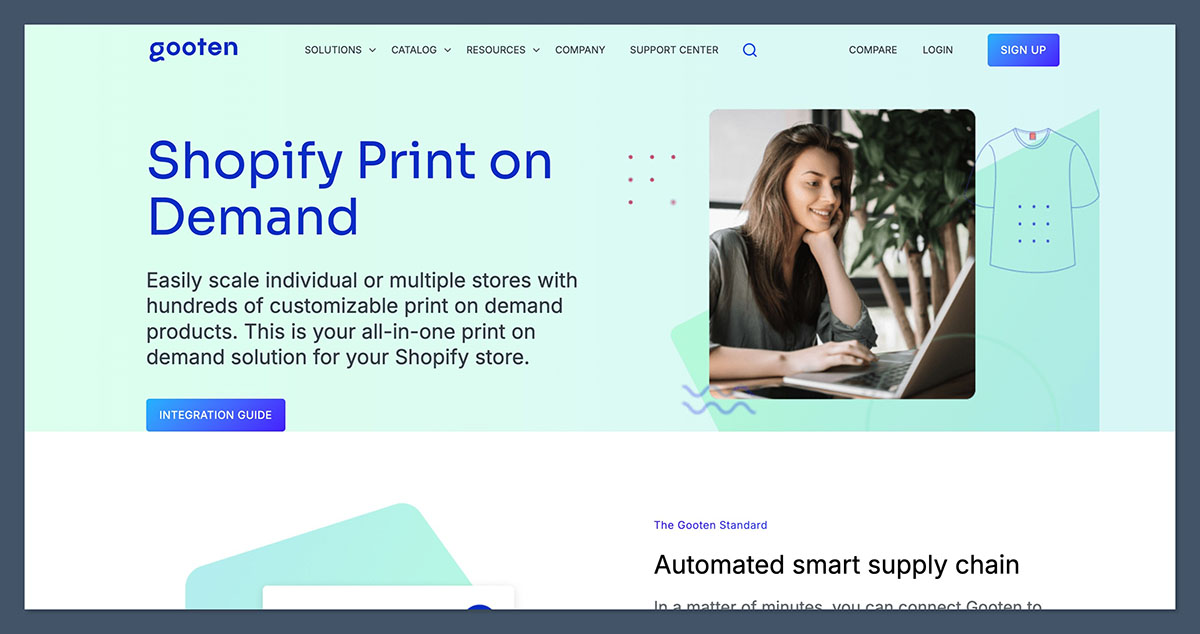
This is the most popular setup — and the most stable one Gooten offers.
- Install the Gooten Shopify App
- Sync products with your store directly from Gooten’s Product Hub
- Orders automatically push from Shopify to Gooten
- Tracking is synced back to Shopify once shipped
- Inventory stays synced (no overselling)
My take:
If you’re running a serious Shopify store, this setup works really well. You can duplicate products fast, keep inventory aligned, and automate fulfilment with minimal babysitting.
Bonus:
Shopify + Gooten lets you offer upsells and bundles using apps like Zipify or ReConvert — the backend fulfilment doesn’t change.
2. Etsy Integration
Etsy sellers are a growing chunk of the POD world, and Gooten has a direct integration for Etsy that works… once you get through the setup.
- Sync products from Gooten to Etsy
- Fulfilment is fully automated
- Tracking info pushed back to Etsy
- Works with Etsy SEO tools like EverBee and eRank
Challenges:
- Setting up your product variants can be a bit fiddly
- Mockups are basic, which doesn’t always fly with Etsy buyers
- No built-in personalisation (like Printify offers)
Who it’s for:
Etsy pros who already understand listings and want better margins than Printful gives.
3. WooCommerce Integration
Gooten does offer a WooCommerce plugin, and it works — but it’s not the most beginner-friendly setup.
- Requires API keys
- You need to test your connection manually
- Can be buggy with heavily customised themes or third-party plugins
That said, if you’re a dev or using a clean WooCommerce setup, it gets the job done. You’ll still get:
- Automatic order syncing
- Inventory management
- Tracking updates
Pro tip:
If you’re using WooCommerce, consider Gooten’s API for more control and cleaner performance.
4. BigCommerce Integration
This is less common, but Gooten does support BigCommerce through a native app.
Same features as Shopify:
- Product sync
- Auto-fulfilment
- Tracking feedback
- Variant support
If you’re on BigCommerce, this integration works well. It’s aimed more at high-volume stores with custom setups.
5. API Access: Full Control for Developers & Agencies
For advanced users, Gooten’s API is actually one of the strongest in the POD space.
- Full access to product creation, inventory, order placement, and tracking
- RESTful API with JSON responses
- Well-documented with real use-case examples
- Supports custom platforms (like ClickFunnels, Amazon, mobile apps, etc.)
I’ve used this for clients running:
- Custom merch platforms
- Shopify + Recharge setups
- Funnel-based stores with backend fulfilment
- Manual CSV + API combo for flash sales
Best part:
The API is free. No paywall. No enterprise-only access.
6. Coming Soon / Workarounds
Right now, Gooten doesn’t natively support platforms like:
- Amazon (requires API workaround)
- Wix (manual fulfilment or API only)
- Squarespace (no direct integration)
- eBay (CSV or API)
But with a little creativity — CSV uploads, Zapier, or third-party connectors — you can still make it work.
Integration Summary Table
| Platform | Native Integration | Auto Order Sync | Inventory Sync | Personalisation Support | Ease of Setup |
|---|---|---|---|---|---|
| Shopify | Yes | Yes | Yes | No | High |
| Etsy | Yes | Yes | Yes | No | Medium |
| WooCommerce | Yes | Yes | Yes | No | Low |
| BigCommerce | Yes | Yes | Yes | No | High |
| Custom/API | Yes | Yes | Yes | Yes (with setup) | Advanced |
| Amazon/Wix | No (API only) | Yes (via API) | Yes (via API) | Yes (via API) | Low |
Final Verdict on Gooten’s Integrations
If you’re on Shopify or Etsy, Gooten is ready to go with minimal setup. WooCommerce and BigCommerce work well if you’re more technical.
The API access is what really separates Gooten from the hobby-grade POD tools — you can build whatever you want.
Just know that personalisation is limited, and mockups are basic, so if you’re running a heavily branded store, you may need some outside tools to polish up your listings.
Ease of Use: Is Gooten Beginner-Friendly or Built for Pros?
Gooten isn’t going to win any awards for design. The dashboard feels more like internal software used by warehouse teams — and less like something polished for Shopify beginners.
That said, once you understand how it works, it does what you need it to do without getting in the way.
It’s built with functionality in mind. Not beauty. Not onboarding. Just get-it-done practicality.
What’s the Learning Curve Like?
Gooten has a steeper learning curve than some other platforms — mostly because it assumes you already understand how print-on-demand works.
If you’re switching over from Printify or just getting started, expect to spend a bit of time getting used to it.
Where people get stuck:
- Navigating the Product Hub feels unintuitive at first
- Some menus are buried two clicks deeper than you’d expect
- The product creation workflow is fast, but not polished
The lack of visual cues or guided steps means new users often need to reference the Help Center. Fortunately, once you’ve created your first few products, the process becomes second nature.
Where Gooten Gets It Right
Even though it’s clunky on the surface, Gooten’s backend has some powerful features that more polished platforms just don’t offer — especially when it comes to managing a high volume of products or orders.
Standout tools:
- Smart Order Routing: Orders get sent to the best available supplier, based on speed, price, and location. You can also override it.
- Bulk Import & Editing: Upload and manage hundreds of SKUs in one go. Great for large stores or agency setups.
- Inventory Sync: Automatically updates your connected store’s inventory to avoid overselling.
These features are subtle, but they save hours — especially during high-volume periods like Black Friday or product launches.
Where It Falls Short
Gooten is built for backend efficiency, not visual flair — and that shows.
Common usability issues:
- The interface feels dated (think early 2010s software)
- No drag-and-drop editors or real-time previews
- Mockup generator is basic — just flat images, no lifestyle visuals
- No guided setup or onboarding process
There’s no live chat to walk you through setup either. You’ll need to lean on the Help Center or your own experience to get comfortable.
Interface Summary Table
| Area | Strength or Weakness | Notes |
|---|---|---|
| Dashboard UI | Weakness | Feels outdated, not beginner-friendly |
| Product Creation | Strength | Fast but lacks polish |
| Order Tracking | Strength | Easy to follow and filter |
| Learning Curve | Weakness | Steep if you’re new to POD |
| Mockup Generator | Weakness | Limited — flat, no lifestyle previews |
| Bulk Tools | Strength | Huge time-saver for high-SKU setups |
Final Verdict on Ease of Use
Gooten’s interface isn’t made for people who need their hand held. It’s made for sellers who want speed, control, and automation — and don’t mind a few rough edges to get it.
If you’re the kind of seller who values efficiency over aesthetics, you’ll appreciate how streamlined it becomes once you’re up and running.
But if you’re used to sleek layouts and tooltips guiding you through every step, Gooten will feel like work at the start.
Customer Support & Loyalty Program: Will They Actually Help You?
Let’s be real — customer support isn’t Gooten’s strongest selling point. If you’re coming from platforms with live chat, real-time support, or 24/7 coverage, Gooten might feel a bit cold.
Support runs through email and ticket submissions only. There’s no live chat, no phone support, and no helpdesk that jumps in mid-order to resolve issues. That’s not ideal if you need answers fast, especially during peak seasons.
That said, it’s not a dealbreaker — especially if you understand how to work around it and get into the loyalty program.
What the Support Experience Looks Like
If you’re on the base level (most users start here), you’ll get:
- A help center with detailed written guides
- Email/ticket-based support via dashboard
- Replies within 24–48 hours, sometimes longer if it’s busy
Some users get fast resolutions. Others get silence for a few days and have to follow up. It’s not that the support team is bad — they just seem under-resourced and overloaded during high-volume times.
My advice?
Don’t rely on support for daily operations. Get your processes clean from the start, and use the Help Center for setup.
Real Customer Reviews: What People Actually Say About Gooten
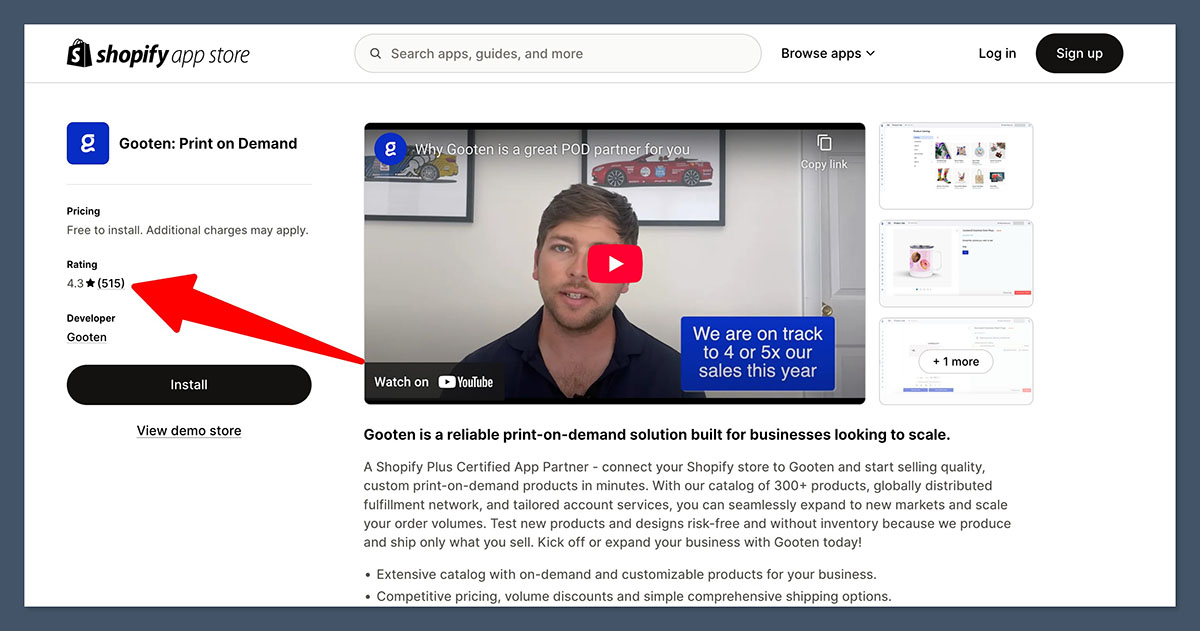
Let’s be honest — no POD platform has perfect reviews. They all have delays, glitches, and the occasional bad print.
But the difference is in patterns. And after digging through forums, review platforms, and years of feedback, here’s what the Gooten user base really thinks.
I’ve broken it down into the major sources — Shopify App Store, Reddit, Trustpilot — and added verdicts from people in the trenches.
1. Shopify App Store
- Average Rating: 4.3 out of 5
- Total Reviews: 500+
Common Praise:
- Competitive pricing
- Automation that “just works”
- Useful if you run multiple stores
Common Complaints:
- Clunky UI and mockup tools
- Occasional vendor-related fulfilment errors
- Limited branding options
Example 1:
“The pricing is way better than Printful and I’ve been able to scale up fast with less overhead. But I wish the mockup tool didn’t look like it was made in 2010.”
— Verified Shopify Store Owner
Example 2:
“I run 3 POD stores and Gooten is my go-to for mugs and canvas art. Their fulfilment speed is good, but support is slow when I need help.”
— Shopify Review
Verdict:
Shopify users like Gooten for its scalability and profit margin — not for aesthetics or beginner friendliness.
2. Reddit Feedback (r/printondemand, r/entrepreneur)
Reddit’s full of blunt, unfiltered reviews from actual sellers.
Common Praise:
- Lower costs than Printful
- Great for automation, agencies, and scaling
- Reliable order routing
Common Complaints:
- Interface “feels old”
- Inconsistent print quality from certain suppliers
- Support takes too long on weekends
Redditor Comment 1 (r/printondemand):
“If you’re not a beginner and don’t care about how pretty the dashboard looks, Gooten is a beast. I route all EU orders through them now to cut shipping times.”
— u/growyourshop
Redditor Comment 2 (r/entrepreneur):
“We had some hiccups with mug prints being too dark, but they reprinted no questions asked. Their supplier network is solid, but you have to watch out for inconsistencies.”
— u/shopifybeast
Verdict:
Reddit sellers respect Gooten for being reliable at scale — but they warn you to monitor supplier performance and avoid relying on it for premium branding.
3. Trustpilot Reviews
- Average Rating: 3.9 out of 5
- Total Reviews: 200+
Positive Themes:
- Accurate fulfilment most of the time
- Quality of apparel and home products is solid
- Tracking system works well
Negative Themes:
- Delayed orders during peak seasons (especially Q4)
- Customer service delays
- No custom branding = missed opportunity for brand-focused stores
Example 1:
“Shipping was a bit slow during Black Friday, but they did fulfil everything. No lost orders, which I can’t say for other platforms I’ve used.”
— Trustpilot User, 2023
Example 2:
“Honestly? Gooten is great if you just want to fulfil products without thinking about it. But if you care about beautiful packaging, go somewhere else.”
— Trustpilot Reviewer
Verdict:
Sellers see Gooten as a reliable fulfilment machine — just not one that adds polish or high-end branding.
Summary Table: Customer Feedback Across Platforms
| Platform | Average Rating | Pros Mentioned | Cons Mentioned |
|---|---|---|---|
| Shopify | 4.1/5 | Low prices, auto-fulfilment, multi-store sync | Clunky UI, basic mockups |
| Mixed | Great for bulk orders, EU routing | Print inconsistencies, no advanced branding | |
| Trustpilot | 3.9/5 | Fulfilment accuracy, decent product quality | Support delays, no custom packaging |
Common Themes from Real Users
What Customers Like Most:
- Competitive pricing = better margins
- Automations save time at scale
- International routing speeds up EU/UK orders
- Order tracking and fulfilment transparency
What Frustrates Sellers:
- Interface feels outdated
- Limited branding/customisation options
- Support is reactive, not proactive
- Print quality can vary based on supplier
My Verdict After Seeing These Reviews
If you’re:
- Focused on scaling profitably
- Running multiple stores
- Willing to trade branding for automation
…then Gooten is exactly what you need.
But if you’re:
- Trying to build a premium, branded POD business
- Relying on mockups and custom unboxing
- Or need hand-holding as a beginner…
…you’ll probably get frustrated.
Final Verdict: Is Gooten Worth It in 2025?
After 10+ years in the print-on-demand game, I can tell you this: Gooten isn’t for everyone. But if it fits your model, it’ll make you money.
It’s not flashy. It’s not beginner-friendly. It won’t make your unboxing videos go viral.
But if your goals are scale, automation, and profit, it’s a top-tier choice.
I use Gooten for:
- Running volume stores across multiple platforms
- Selling higher-margin products like wall art, mugs, and home goods
- Dropshipping into EU/UK without slow shipping
- Automating fulfilment without thinking about it daily
Here’s the key:
You trade branding and design flexibility for speed, control, and margin.
If you’re good with that tradeoff — Gooten delivers.
Gooten vs Other POD Platforms (2025 Comparison)
| Feature | Gooten | Printify | Printful | Gelato |
|---|---|---|---|---|
| Base Product Pricing | Low | Low (with Premium) | High | Medium |
| Monthly Fees | None | $29 (Premium) | None | None |
| Mockup Generator | Basic | Good | Best-in-class | Polished |
| Custom Packaging | No | No | Yes (with fees) | Limited |
| Product Quality | Reliable | Varies by vendor | High (in-house) | Good |
| Shipping Speed (US) | 3–7 Days | 3–7 Days | 2–5 Days | 2–5 Days |
| Shipping Speed (EU) | 5–10 Days | 5–10 Days | 5–10 Days | 3–6 Days |
| Automation Tools | Advanced | Standard | Clean | Clean |
| Integrations | Shopify, Etsy, Woo, API | Broad support | Broad support | Broad support |
| Ease of Use | Clunky | Beginner-friendly | Very user-friendly | Simple |
| Support | Slow at times | Responsive | Fast | Good |
| Best For | Scaling merchants | Beginners and testers | Branded stores | Global fast shipping |
Who Should Use Gooten?
- You sell on multiple platforms
- You care more about profit margins than pretty dashboards
- You want to automate everything
- You’re experienced with POD or eCommerce in general
- You don’t need full control over branding
Who Should Skip Gooten?
- You want beautiful packaging, labels, or unboxing
- You’re new to eCommerce or need hand-holding
- You rely on visual branding (mockups, product customisation, etc.)
- You want to build a premium DTC experience
If you’re still unsure, try this:
- Launch a test product with Gooten
- Compare fulfilment speed and print quality with your current platform
- Track margins and returns over 30 days
That’s how I test every POD supplier — real-world results, not sales pages.


